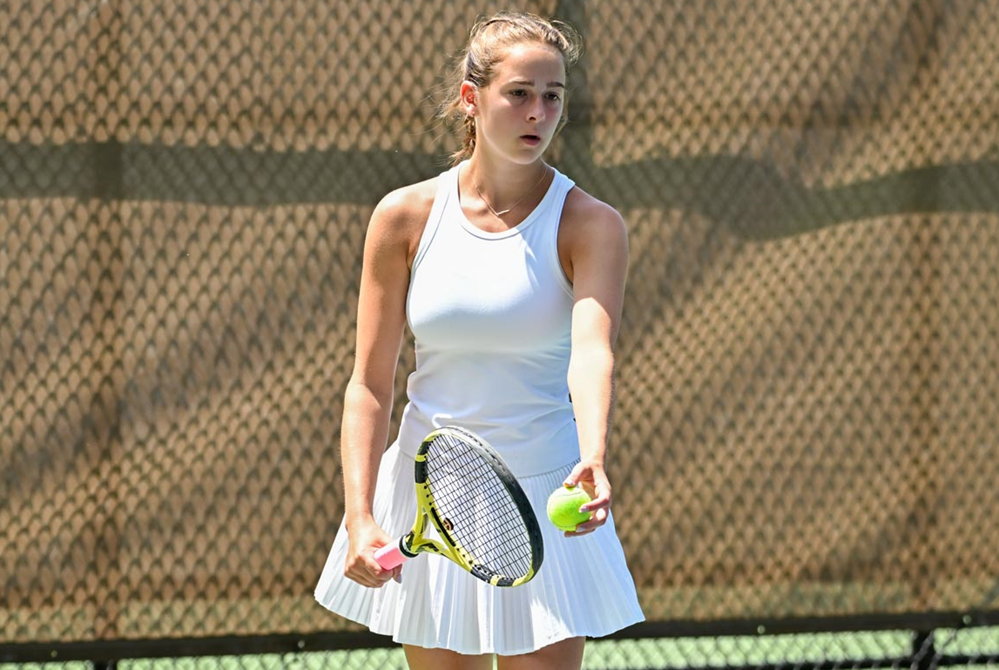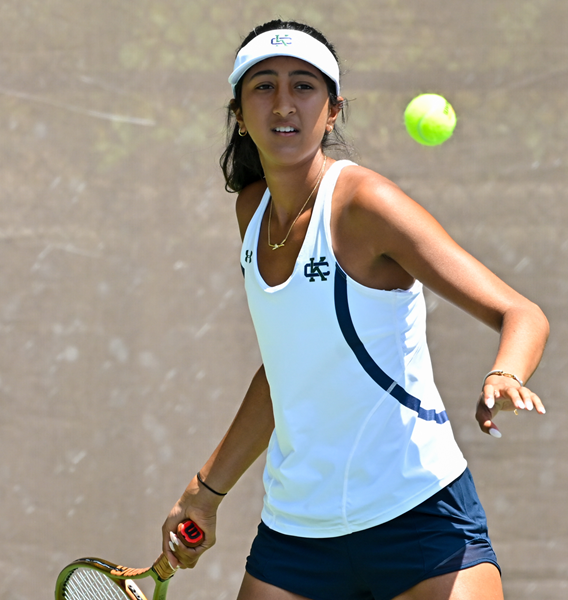
New Math: Division & Multiplication Problems
July 25, 2017
By Jack Roberts
MHSAA Executive Director
This is the second part in a series on MHSAA tournament classification, past and present, that will be published over the next two weeks. This series originally ran in this spring's edition of MHSAA benchmarks.
High school tournament classifications went viral before there was social media and most of us knew what “viral” meant.
Much as a virus infects computers today or has created epidemics of disease around the world for centuries, high school tournament classification – once introduced – tends to spread uncontrollably. Once started, it tends to keep expanding and rarely contracts.
While we are still some distance from providing every team a trophy as a result of expanding high school tournament classification across the country, there is criticism nevertheless that we are headed in that direction – a philosophy which is supposed to exist only in local youth sports for our youngest children.
Michigan could be blamed for all this. Michigan is generally accepted as the first state to provide different classifications for season-ending tournaments for different sized schools. It started a century ago. Today, every state has various classifications for its tournaments in most if not all sports. And it is a bit ironic that Michigan – creator of the classification chaos – more than most other states has kept the number of tournament classes or divisions under control.
Yes, there is evidence that tournament classifications have expanded over the years in Michigan, especially with the relatively recent introduction of tournaments in football and the late 1990s’ move from classes to divisions in most MHSAA tournaments. But the MHSAA Representative Council has held true to its word when it expanded the playoffs for football from four classes to eight divisions: this is needed because of unique factors of football, factors that exist in no other sport; and all other sports should be capped at a maximum of four classes or divisions.
Kentucky is the preeminent defender of single-class basketball. All of its 276 high schools compete for the single state championship for each gender. In Indiana, there are still open wounds from its move in 1998 from one to four classes for its 400 schools in basketball.
Multi-class tournaments have tended to increase the number of non-public school champions, which some states are trying to lower through enrollment “multipliers,” and also tend to increase the number of repeat champions, which some states are trying to affect with “success factors” which lift smaller schools into classifications for larger schools if they take home too many trophies.
While there is considerable evidence that state tournaments do as much bad as good for educational athletics, state associations persist in providing postseason tournaments because, on balance, the experiences are supposed to be good for student-athletes. And once we reach that conclusion it is just a small leap to believe that if the tournaments are good for a few, they must be better for more – which leads to creating more and more tournament classifications. One becomes two classes, then three, then four and so forth.
While the argument is that more classifications or divisions provides more students with opportunities to compete and win, it is undeniable that the experience changes as the number of tournament classifications expands. It is not possible for state associations to provide the same level of support when tournament classifications expand to multiple venues playing simultaneously. For example, there is less audio and video broadcast potential at each venue, and less media coverage to each venue. Focus is diluted and fans diminished at each championship.
No one can argue reasonably that today's two-day MHSAA Football Finals of eight championship games has the same pizazz as the one-day, four-games event conducted prior to 1990.
In some states the number of divisions has grown so much that it is difficult to see much difference between the many season-ending state championship games and a regular-season event in the same sport.
It is a balancing act. And Michigan has been studying that balance longer than any other state, and charting a steadier course than most.
Addition by Division
The shift to Divisions for MHSAA Tournament play in numerous sports has added up to a greater number of champions for teams and individuals across the state. Following are the sports currently employing a divisional format, and the procedures for determining enrollment and classification.
In 23 statewide or Lower Peninsula tournaments, schools which sponsor the sport are currently divided into nearly equal divisions. They are:
- Baseball - 4 Divisions
- Boys Bowling - 4 Divisions
- Girls Bowling - 4 Divisions
- Girls Competitive Cheer - 4 Divisions
- LP Boys Cross Country - 4 Divisions
- LP Girls Cross Country - 4 Divisions
- LP Boys Golf - 4 Divisions
- LP Girls Golf - 4 Divisions
- Ice Hockey - 3 Divisions
- Boys Lacrosse - 2 Divisions
- Girls Lacrosse - 2 Divisions
- Boys Skiing - 2 Divisions
- Girls Skiing - 2 Divisions
- LP Boys Soccer - 4 Divisions LP
- Girls Soccer - 4 Divisions
- Girls Softball - 4 Divisions
- LP Boys Swimming & Diving - 3 Divisions
- LP Girls Swimming & Diving - 3 Divisions
- LP Boys Tennis - 4 Divisions
- LP Girls Tennis - 4 Divisions
- LP Boys Track & Field - 4 Divisions
- LP Girls Track & Field - 4 Divisions
- Wrestling - 4 Divisions
Lists of schools for each division of these 23 tournaments are posted on MHSAA.com approximately April 1. Listings of schools in Upper Peninsula tournaments for their sports are also posted on MHSAA.com. The lists are based on school memberships and sports sponsorships in effect or anticipated for the following school year, as known to the MHSAA office as of a date in early March.
In football, the 256 schools which qualify for MHSAA 11-player playoffs are placed in eight equal divisions annually on Selection Sunday. Beginning in 2017, the 8-player divisions will be determined in a like manner on Selection Sunday as well, with 32 qualifying schools placed in two divisions.
Schools have the option to play in any higher division in one or more sports for a minimum of two years.
The deadlines for "opt-ups" are as follows:
- Applications for fall sports must be submitted by April 15
- Applications for winter sports must be submitted by Aug. 15
- Applications for spring sports must be submitted by Oct. 15
Subsequent to the date of these postings for these tournaments, no school will have its division raised or lowered by schools opening or closing, schools adding or dropping sports, schools exercising the option to play in a higher division, or approval or dissolution of cooperative programs.
When the same sport is conducted for boys and girls in the same season (e.g., track & field and cross country), the gender that has the most sponsoring schools controls the division breaks for both genders.

Motivation Not in Short Supply as Country Day Emerges, Avenges with Finals Win
By
Scott Hassinger
Special for MHSAA.com
June 1, 2024
KALAMAZOO - Fueled by a Finals runner-up finish last year and second-place Regional showing two weeks ago, Detroit Country Day unseated two-time reigning champion Bloomfield Hills Cranbrook Kingswood on Saturday and clinched this season’s Lower Peninsula Division 3 girls tennis championship.
Country Day totaled 33 points at Kalamazoo College's Stowe Stadium to win its first crown since 2021. Cranbrook Kingswood earned second with 29 points, followed by Chelsea (24), Bloomfield Hills Marian (22) and Ada Forest Hills Eastern (21).
"We knew coming in that either us or Cranbrook Kingswood could win this meet. I just felt like our fight and courage were excellent, and that's what happens when everything falls into place. I'm so happy for these girls," said Country Day's first-year head coach Nick Fiaschetti. "This team is incredible. Our seniors are our biggest leaders, and everyone is like a family – and when you have that combination, it makes you difficult to beat."
Country Day didn't let its latest championship chance slip through its grasp. Cranbrook edged Country Day by just two points in 2023. The Cranes (20 points) also edged the Yellowjackets (17) to win their Regional two weeks ago.
"Country Day is a very good team. It really comes down to how well players handle the pressure. The teams that stay relaxed the most generally are the one that wins a state championship,” Cranbrook coach Grant Asher said. “We came up a bit short this year, but I'm proud of our girls. They competed well from the start until the end of the season. We look forward to next season,"
 Country Day claimed flight titles at No. 1, No. 3 and No. 4 singles, along with a crown at No. 1 doubles.
Country Day claimed flight titles at No. 1, No. 3 and No. 4 singles, along with a crown at No. 1 doubles.
At No. 1 singles, Sophia Grzesiak defeated Forest Hills Eastern's Lilah Zaskowski in the final 6-1, 6-1.
"I'm just really proud of winning an individual title because it helps our quest for the team title. We lost Regionals, but I feel like it gave us the push we needed to come out this weekend and win it all," Grzesiak said.
At No. 3 singles, Helen Benjamin from Country Day topped Muskan Rekhani from Forest Hills Eastern 6-3, 6-1.
"I had to adjust my strategy to get all the balls in. I just had to be consistent and aggressive,” Benjamin said. “My approach shot and putting it away for the point are my biggest strengths. Our captains are great, and we are all very good friends and mentally strong."
At No. 4 singles, Country Day's Katie Han outlasted Cranbrook's Olivia Zhang 3-6, 6-2, 6-4.
The Yellowjackets’ No. 1 doubles combination of Marin Nolander and Peja Liles edged Chelsea's duo of Meghan Bareis and Haley Hopkins 4-6, 6-1, 6-1.
"They came out strong and aggressive and we found our momentum in the second set," Norlander said.
"We played our game and had fun. Our net play really helped us out as well," Liles added.
Chelsea unseeded sophomore Samantha Bieber downed Country Day's top-seeded Quinn Norlander 3-6, 6-3, 6-2, to win No. 2 singles.
"(Norlander) seemed to be struggling with balls hit to her backhand, so I decided to take advantage of that,” Bieber said. “My groundstrokes are strong, and I think my endurance plays a big part in my success. Just being able to stick with it helps me in tough matches."
Bieber's high fitness level comes from being a dual-sport athlete in track & field. She competed in this weekend's Tennis Finals because it’s her primary sport, but she qualified for the Track Finals as well as a member of two Bulldogs relay teams.
"Running helps me mentally because in a race you have to keep pushing, so that helps me in tennis and it also teaches me time management," Bieber added.
Cranbrook showed its dominance in the doubles flights by winning at No. 2, No. 3 and No. 4. Sophia Kouza and Grace Zhang squeaked out a 6-3, 6-7 (5-7), 6-2 win over Chelsea's Lucy Taylor and Brenna Taylor at No. 2, and the Cranes' No. 3 tandem of Madeline Day and Sanvi Upadhyayula were victorious over Marian's Audrey Agbay and Yana Higgins 6-7 (3-7), 6-4, 6-3. Cranbrook's No. 4 junior duo of Michelle Chen and Jessica Hall defeated Marian's Laura Higdon and Stella Glorio 6-2, 6-3.
"We had a lot of highs and lows today," Day said. "Our camaraderie helps keep our spirits up even when one of us is down."
PHOTOS (Top) Detroit Country Day’s Marin Norlander prepares to serve during a No. 1 doubles match Friday. (Middle) Cranbrook Kingswood’s Kayli Lala returns a volley during her No. 1 doubles match. (Click for more from High School Sports Scene.)

